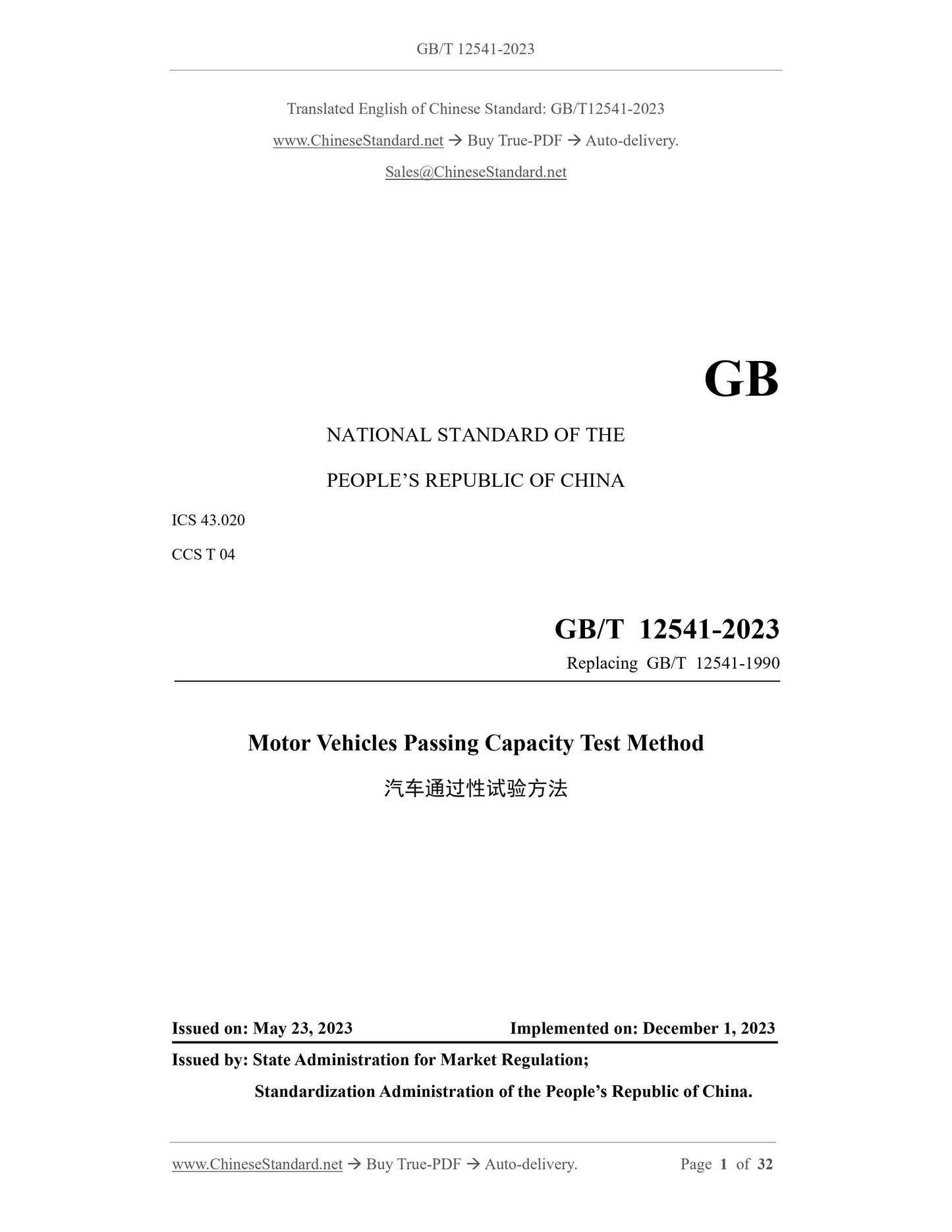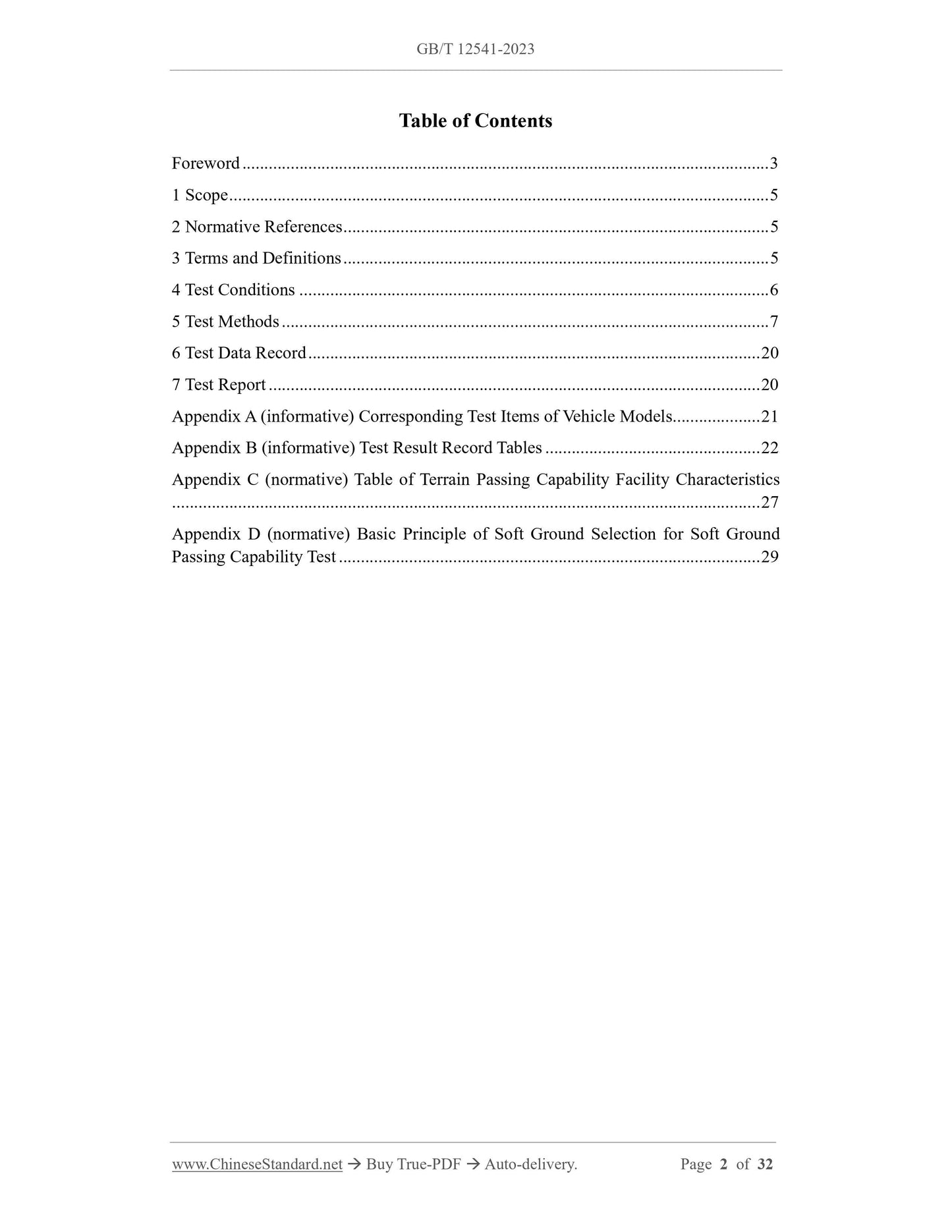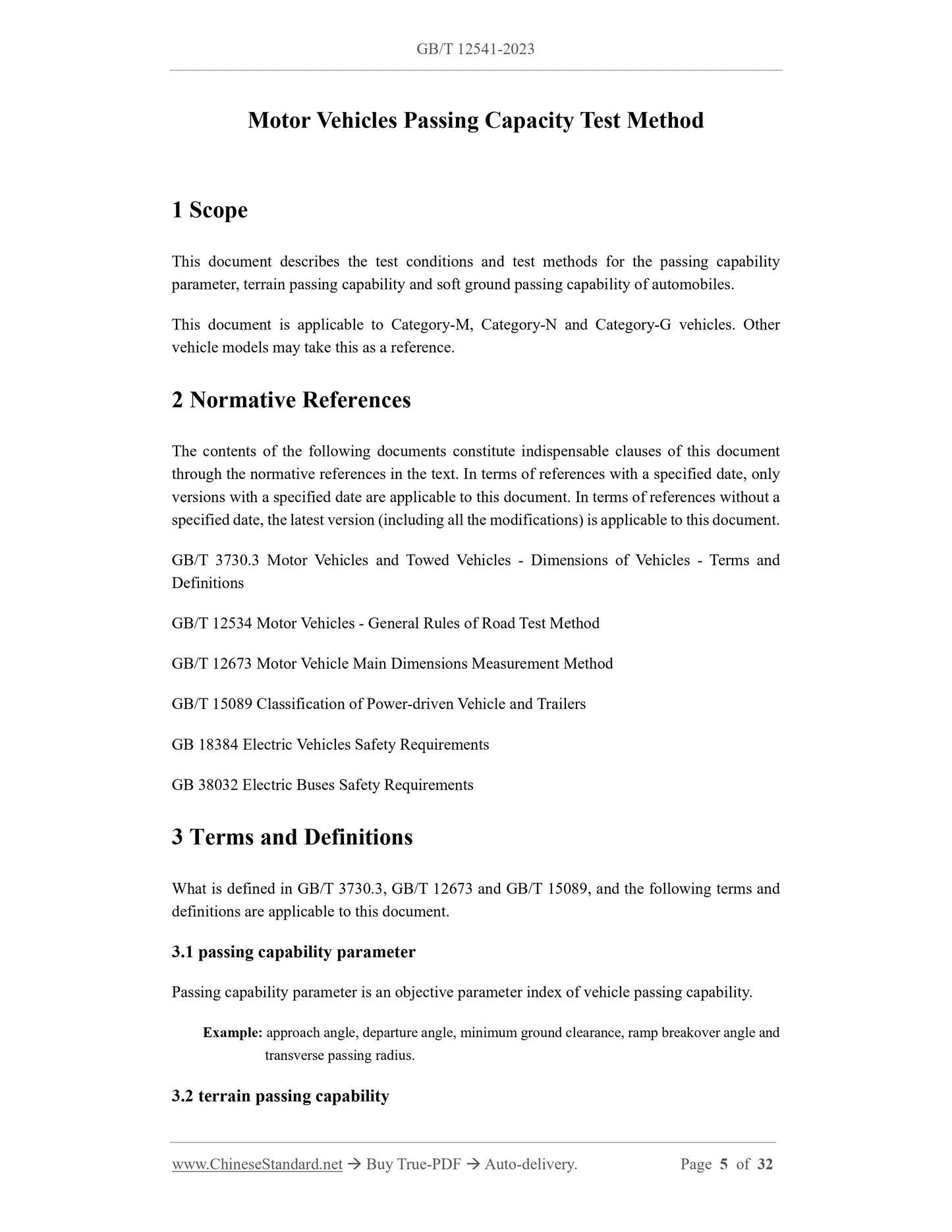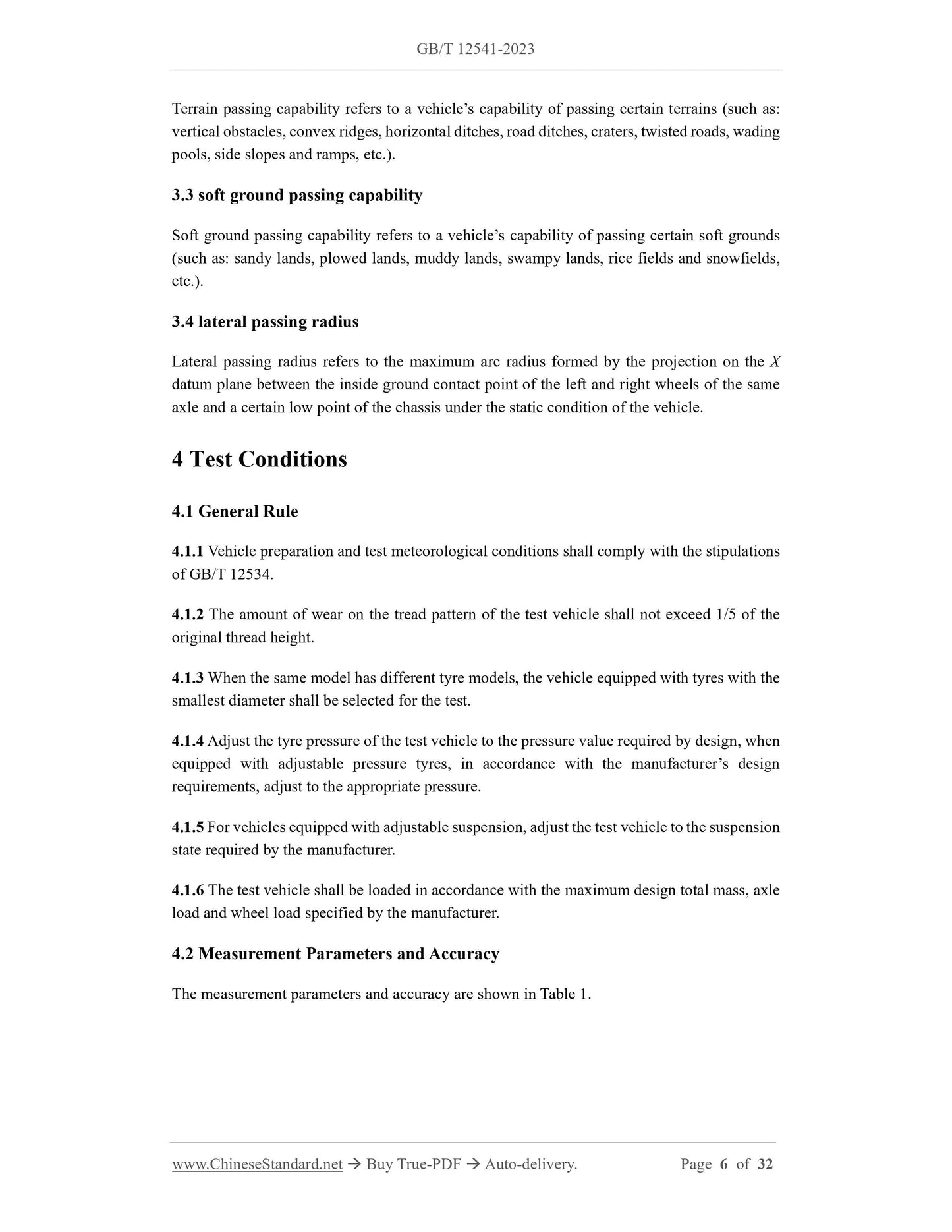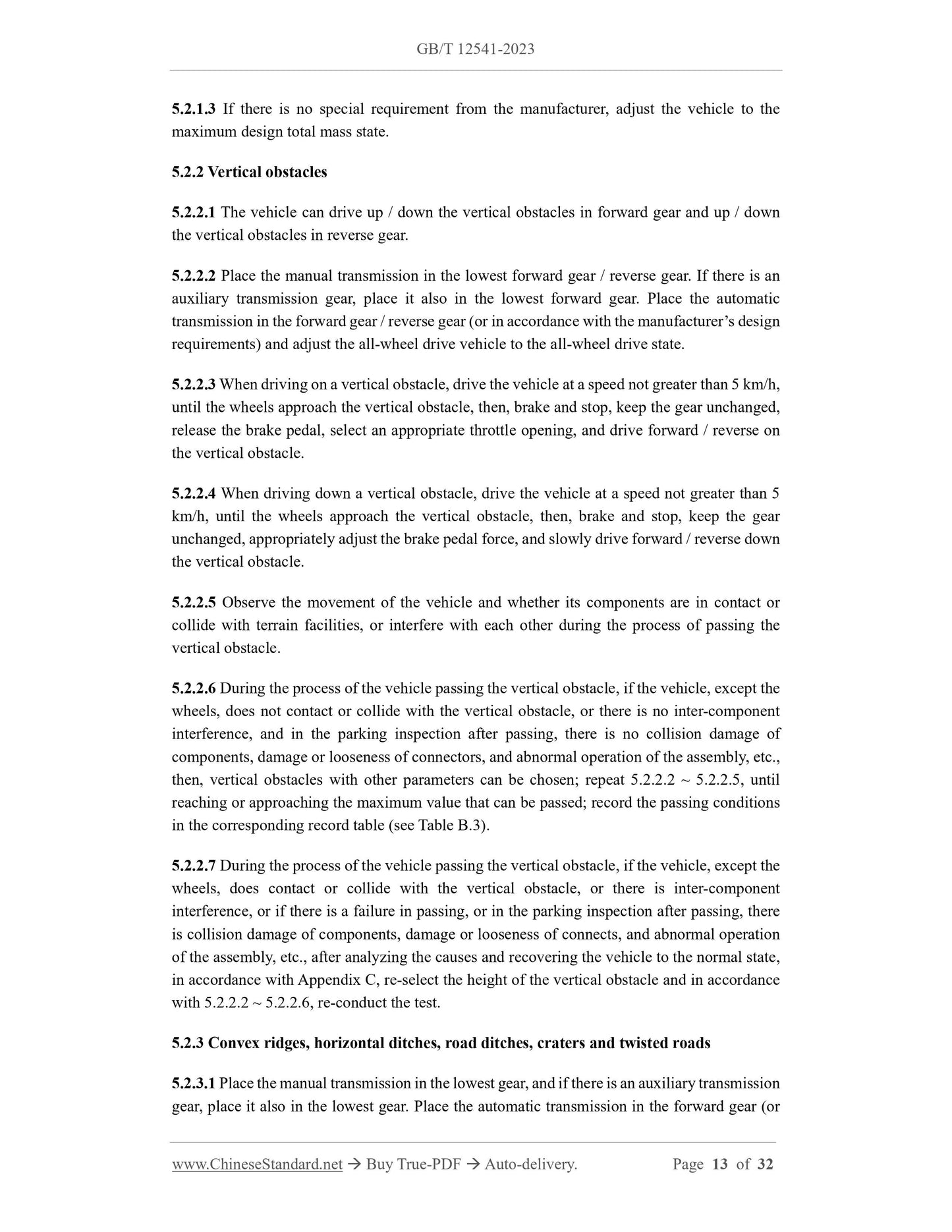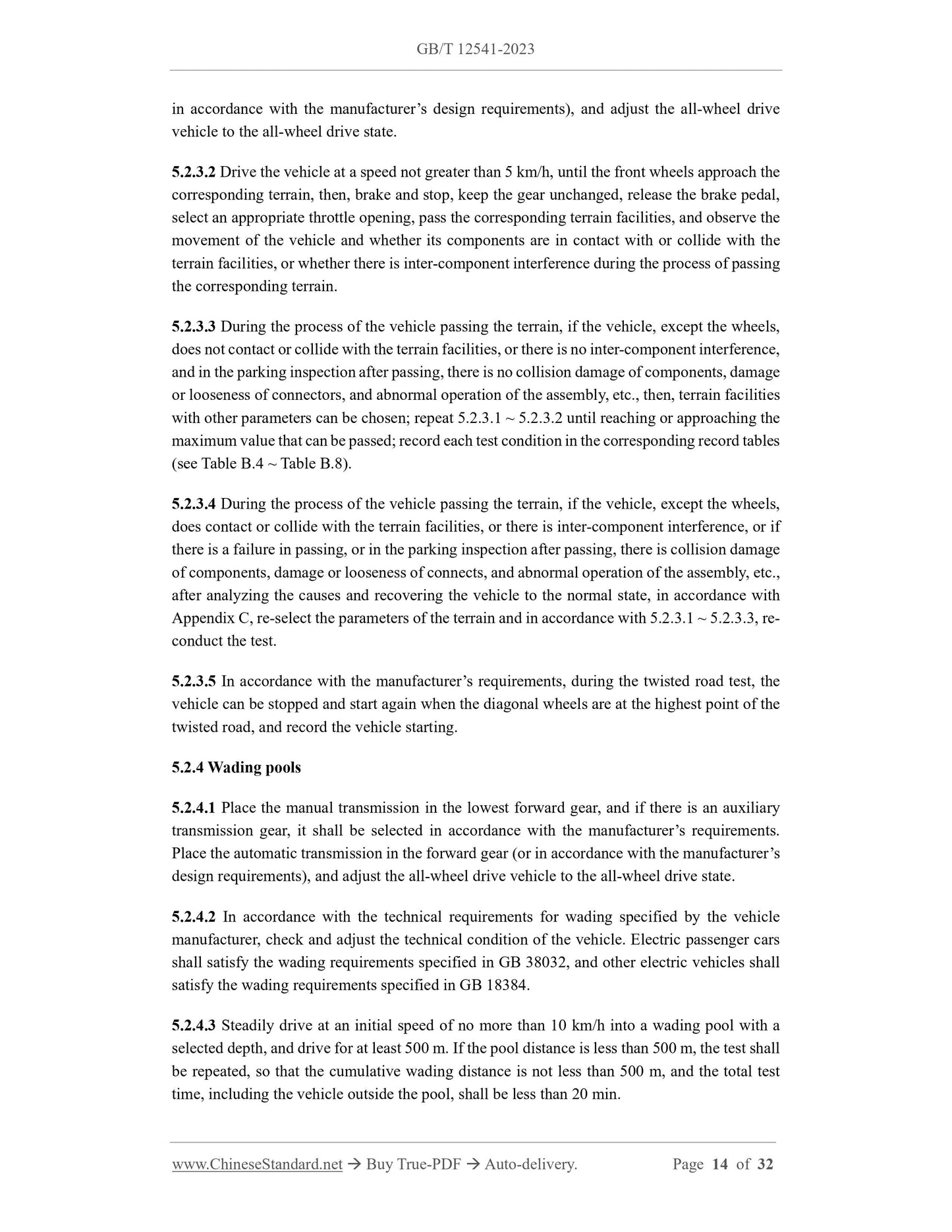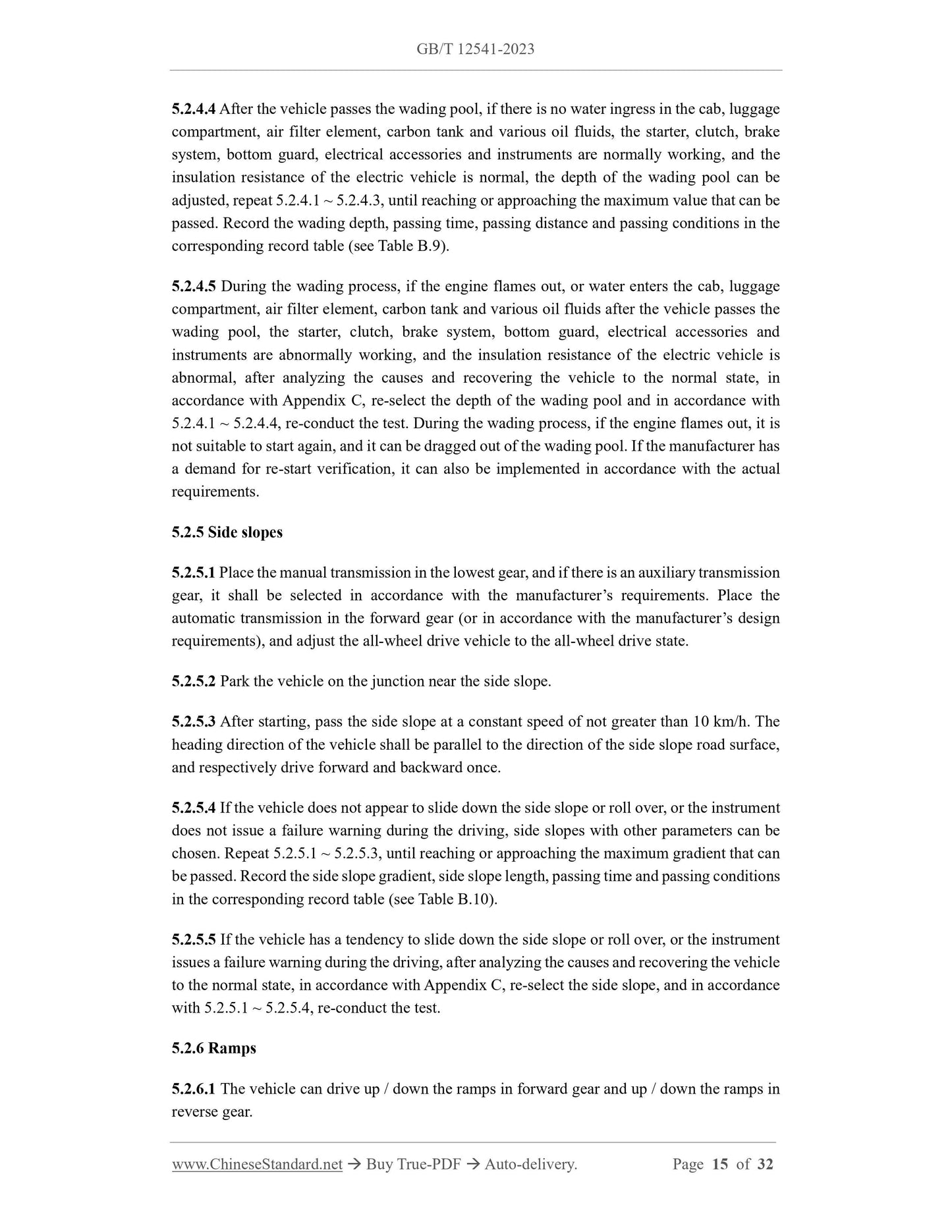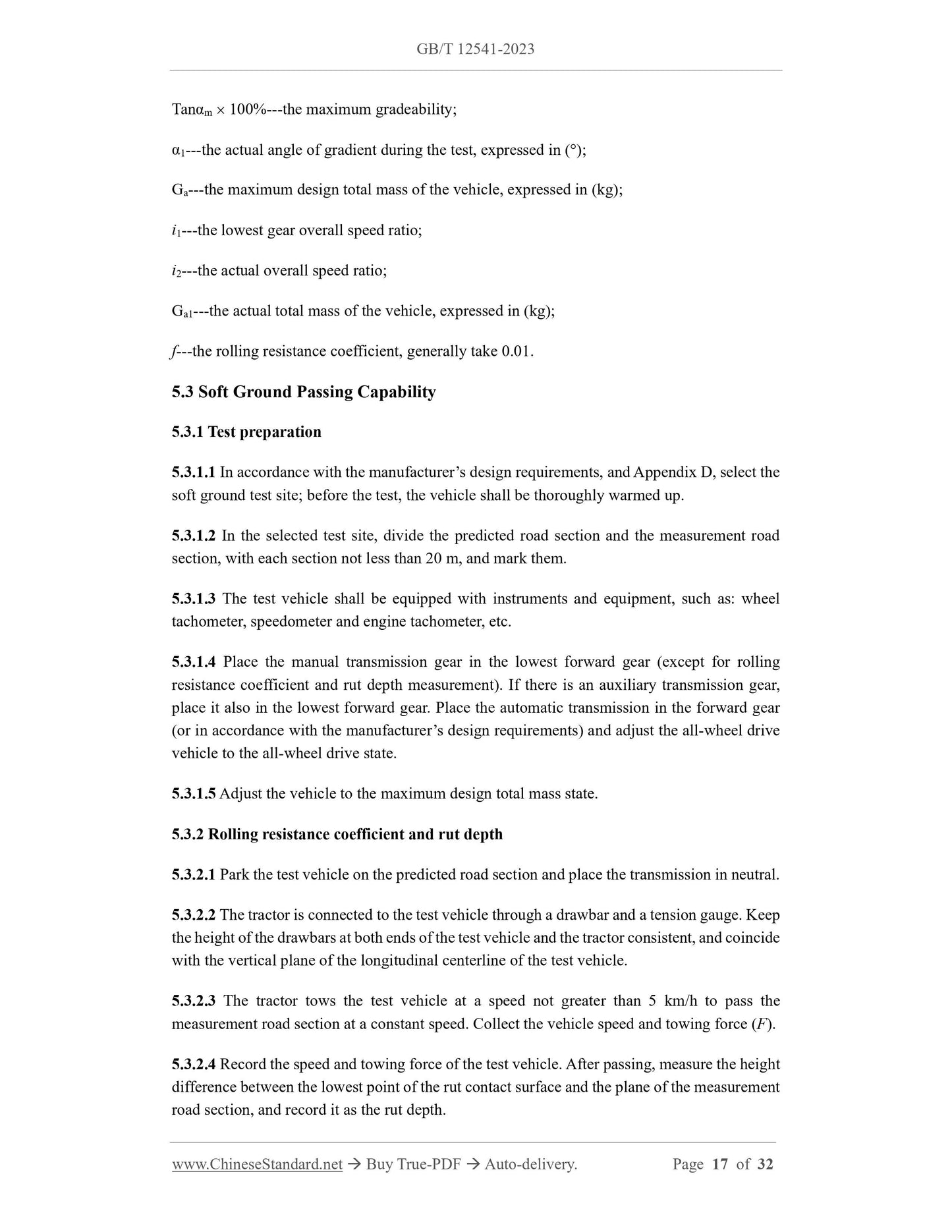1
/
of
8
www.ChineseStandard.us -- Field Test Asia Pte. Ltd.
GB/T 12541-2023 English PDF (GB/T12541-2023)
GB/T 12541-2023 English PDF (GB/T12541-2023)
Regular price
$350.00
Regular price
Sale price
$350.00
Unit price
/
per
Shipping calculated at checkout.
Couldn't load pickup availability
GB/T 12541-2023: Motor vehicles passing capacity test method
Delivery: 9 seconds. Download (and Email) true-PDF + Invoice.Get Quotation: Click GB/T 12541-2023 (Self-service in 1-minute)
Newer / historical versions: GB/T 12541-2023
Preview True-PDF
Scope
This document describes the test conditions and test methods for the passing capabilityparameter, terrain passing capability and soft ground passing capability of automobiles.
This document is applicable to Category-M, Category-N and Category-G vehicles. Other
vehicle models may take this as a reference.
Basic Data
| Standard ID | GB/T 12541-2023 (GB/T12541-2023) |
| Description (Translated English) | Motor vehicles passing capacity test method |
| Sector / Industry | National Standard (Recommended) |
| Classification of Chinese Standard | T04 |
| Classification of International Standard | 43.020 |
| Word Count Estimation | 24,284 |
| Date of Issue | 2023-05-23 |
| Date of Implementation | 2023-12-01 |
| Older Standard (superseded by this standard) | GB/T 12541-1990 |
| Issuing agency(ies) | State Administration for Market Regulation, China National Standardization Administration |
Share
